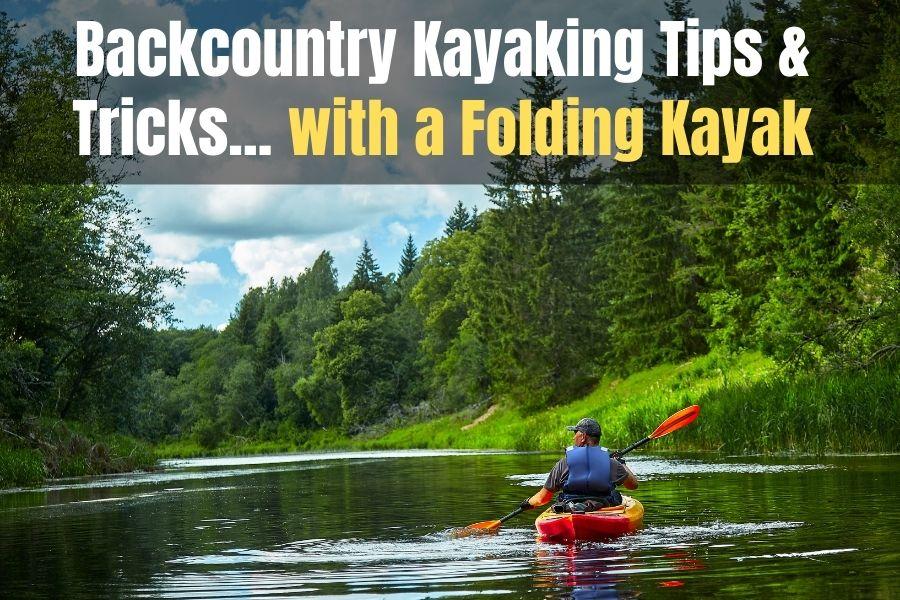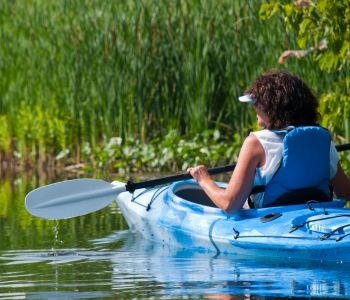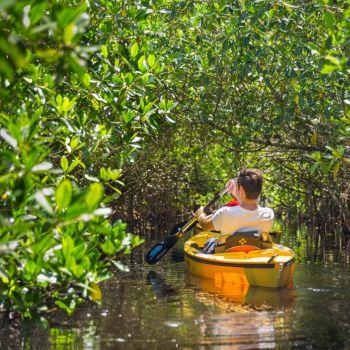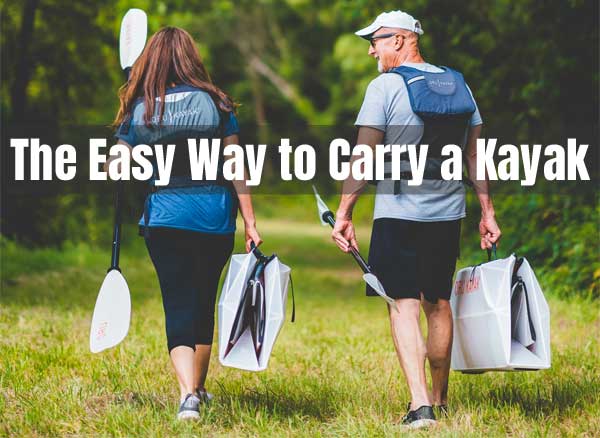Have you ever dreamt of embarking on an unforgettable adventure where the waters are pristine, the landscapes untouched, and the experience truly immersive? Backcountry kayaking offers all this and more, giving you the opportunity to paddle through remote waterways in secluded areas, surrounded by nature’s untamed beauty.

Below, we share expert tips on hiking with a kayak and exploring hidden waterways. Plus, we answer some common questions to help you make the most of your backcountry kayaking journey.
Hiking with a Kayak: Prepare for the Trail Ahead
Before you embark on your backcountry kayaking adventure, you’ll need to hike to your chosen launch point. Hiking with a kayak might be a new experience for some, so follow these tips to ensure a smooth transition from land to water:
1. Choose the Right Kayak: Opt for a lightweight and sturdy kayak that’s suitable for both paddling and carrying on land. Inflatable kayaks are excellent choices for backcountry trips due to their portability.
2. Proper Gear Packing: Distribute the weight of your gear evenly in your kayak. Essential items should be accessible, and lighter gear should be placed toward the front to maintain balance during your hike.
3. Check the Trail Difficulty: Before you start hiking, research the trail’s difficulty level to be adequately prepared. Factor in the weather conditions and terrain to plan your route and estimate the time needed for the hike.
4. Wear Appropriate Footwear: Comfortable, sturdy hiking boots are a must to tackle varying terrains and ensure stability when carrying your kayak.
Exploring Remote Waterways: Navigating the Untouched
Once you’ve reached your secluded waterway, it’s time to embark on your kayaking adventure. Keep the following tips in mind to maximize your experience on the remote waterways:

1. Safety First: Before setting off, always wear a life jacket and ensure you have a first-aid kit, map, and compass or GPS device.
2. Leave No Trace: Preserve the pristine beauty of the backcountry by practicing Leave No Trace principles. Pack out all your trash and avoid disturbing the natural habitat.
3. Admire Wildlife from a Distance: Wildlife encounters can be magical, but keep a safe distance and avoid disrupting their natural behavior.
4. Be Mindful of Water Levels: Water levels in remote areas can fluctuate, affecting the difficulty of your journey. Check weather conditions and water levels before starting and during your trip.
5. Plan for Emergencies: Inform someone reliable about your trip details, including the planned route and estimated return time. Carry a communication device like a satellite phone or personal locator beacon for emergencies.
Frequently Asked Questions:
Q: Is backcountry kayaking suitable for beginners?
A: Backcountry kayaking can be more challenging than regular kayaking due to the hiking involved and potential unpredictable water conditions. It’s best for those with some kayaking experience who are comfortable with basic paddling techniques.
Q: What type of camping gear should I bring?
A: Choose lightweight camping gear, including a compact tent, sleeping bag, and portable stove. Opt for dehydrated meals to minimize weight and pack only essential items for your trip.

Q: Do you need any special permits for backcountry kayaking?
A: Some areas require permits for backcountry camping or kayaking, so research the specific regulations of the area you plan to visit and obtain any necessary permits beforehand.
Q: How can I protect the waterways while kayaking in remote areas?
A: Practice Leave No Trace principles, avoid disturbing wildlife, and refrain from using soap or shampoo in natural water sources. Respect the delicate ecosystem to ensure future generations can enjoy the same pristine wilderness.
In Summary
Backcountry kayaking allows you to connect with nature in remote and secluded waterways. Selecting the right equipment and distributing weight evenly is key to successfully hiking with a kayak. Remember to leave no trace and protect the environment for future adventurers.

